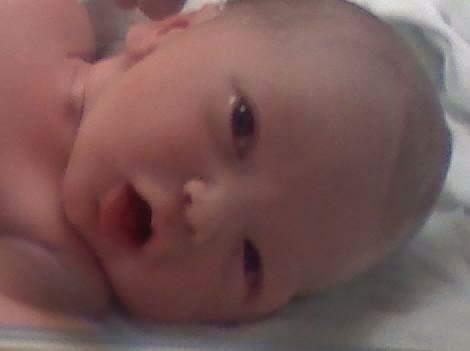The 5 Most Common Childhood Illnesses

Along with a new bundle of joy, comes common childhood illnesses. Pediatric offices appear to be one of the many medical facilities that are filled to the brim, with anxious parents who are concerned about their child's health. From a runny nose to red bumps that appear out of nowhere, watching the clock in the doctor's office can become a nightmare. Listening to a child cry or hearing blood curdling screams while in the waiting room heightens the fear that something more severe could be wrong with your child.
Hoping to ease the pain of traveling to a doctor's office with a sick child, listed are the 5 most common illnesses among children. What to look for could your time at the pediatrics office a little less stressful.
Childhood illnesses can become a worrisome task. Hives appear out of nowhere, a large red bump appears on the arm or that sneeze does not appear to be just allergies. Due to our own upbringing we are familiar with some of the common illnesses such as a stomach, the flu, or even pinkeye. But there are many illnesses that we may have heard about and others that can be prevented. There are viral and bacterial infections that can be eliminated just by using an antibacterial soap or washing hands. When a child has a cold we should always teach them to cover their mouths and wash their hands. This lessens the chances of the infection to spread.
5. Hand, Foot and Mouth Disease
Do not confuse this infection with hoof and mouth disease. One of the most common childhood diseases causes a high-grade fever with blisters or sores that cover the inside of the mouth, palms and soles of the feet. Blisters may also appear on the buttocks of your child.
Prone to rear its head in the Summer or Fall it is caused by a variety of viruses called enteroviruses also known in the United States as coxsackievirus A16.
Not really serious once treated the nasty little bug disappears in about 7-10 days.
4. Croup
If your child's cough sounds like he/she is "barking" this common cough is called croup. Many children are hospitalized every year when left untreated. It is caused by a group of viruses called human parainfluenza viruses, which also aides in the creation of the common cold. Rarely fatal the treatment provided assist the child with breathing normally until the cough ends. If your child is diagnosed with Croup it normally only hangs around for about a week.
3. Impetigo
Discussing the little red bumps previously that weep fluid is called Impetigo. Highly contagious and adults can get it to. It is normally found in children 2-6 years old.
It appears as a cluster of weeping red bumps that are itchy and forms a honey-colored crust over them. Touching the bumps can spread to other children and adults. If your child appears to have these little red bumps. Do not touch them and continually wash your hands. Get them to the doctor so they can prescribe an antibiotic. They will not cause scars and you will see them disappear after about a week. Give them the antibiotic as needed and do not discontinue the medicine. Follow-up with the doctor as discussed at your appointment.
2. Fifth Disease
Commonly known as the "slapped cheek" disease because it causes a red rash on the cheeks that looks like a slap mark. A red rash may also appear anywhere on the body or the arms and legs. There are rarely any symptoms but a possible oncoming cold. It will not always make your child feel ill before the rash appears.
Fifth disease is caused by the human parvovirus B19. By the age of 5 up to 20% of all children may contract Fifth Disease. By age 19 up to 60% of all children have had this disease. Not normally serious the disease can go away in 7-10 days. The infection can also cause joint pain and be misdiagnosed as Rheumatoid Arthirits. Joint pain normally disappears within 3 weeks.
1. RSV
RSV is the most common viruses of all childhood illnesses. Commonly known as Respiratory syncytial virus it wreaks havoc more often then influenza. Many of us have had (RSV) by the time we were 2-years old. Symptoms can include runny nose, cough and fever. It may appear as a common cold.
From newborn to 1 it is the most common cause of pneumonia and inflammation of the small air passages in the child's lungs. Wheezing can be one of the symptoms of RSV and it is sometimes treated with hospitalization. Wheezing will not occur in most children and approximately only 2% of all children are hospitalized.
RSV infections normally last 2 week if treated with an antibiotic. Anyone can contract the RSV virus. Eventually after catching RSV a few times, then it is treated as common cold.
There are many more common childhood illnesses. But with any illness it is best to contact your physician to get the proper diagnosis and have it treated accordingly. Always follow-up with the doctor after the first exam. If you have a newborn to 2-years old, do not ignore the signs when they are sick. Seek immediate medical attention if you believe your child/children has contracted any of these illnesses.
- Childhood Obesity: What are the Facts?
- Childhood Vaccinations
Childhood Vaccinations are a good way to ensure that your child does not suffer from certain diseases. Here is a list of vaccines that your child must be inoculated with. - Contagious Childhood Diseases
Three highly contagious children's diseases are described here including photos. This hub also explains symptoms and treatment.









